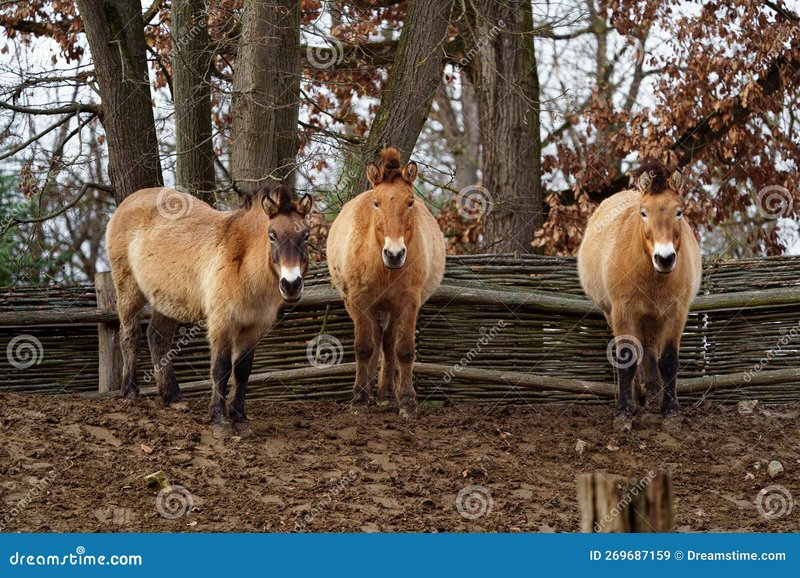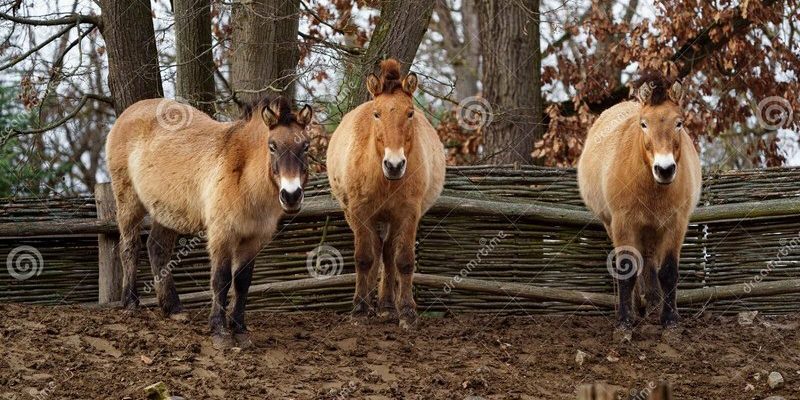
You can think of the Przewalski’s horse as nature’s little survivor—like the clever cousin who always finds a way to get out of tricky situations. With their wild instincts and social structures, these horses show more than just the basics of animal intelligence. They have a range of cognitive abilities that help them navigate their harsh habitats. So, let’s dive into what makes these horses tick and how their brains work in the wild.
What Is A Przewalski’s Horse?
Before delving into their intelligence, let’s clarify what a Przewalski’s horse actually is. Officially known as *Equus ferus przewalskii*, this species is the only true wild horse left today. Unlike the domestic horses we see everywhere, these horses have never been truly domesticated. They are smaller and stockier, with a distinctive dark brown coat and a mane that stands upright instead of falling to the side.
Przewalski’s horses were once on the brink of extinction, primarily due to habitat loss and hunting. In the wild, they typically roam in herds, which consist of a dominant stallion, several mares, and their young. This social structure plays a vital role in how they interact, learn from one another, and solve problems in their environment.
Cognitive Abilities of Przewalski’s Horses
So, how smart are Przewalski’s horses, really? Studies show that they possess a range of cognitive abilities. These include problem-solving skills, social intelligence, and memory. For instance, researchers have noted that they can recognize their herd members and remember the locations of water and food sources even after being away for extended periods.
The ability to solve problems is particularly noteworthy. In the wild, these horses must adapt to varying conditions and find food in sparse environments. They often have to figure out how to open gates or navigate around obstacles. This adaptability demonstrates a level of intelligence comparable to other intelligent animals.
Social Intelligence
Przewalski’s horses exhibit impressive social intelligence as well. They communicate through vocalizations, body language, and even facial expressions. Herd dynamics are complex—dominant stallions often need to make quick decisions to protect their mares and foals. Observing how they interact gives us a window into their social structures, and it highlights their ability to understand and react to social cues.
For example, during the breeding season, stallions engage in displays of strength to assert their dominance. They can tell when other stallions are a threat and know how to maintain their position within the herd to keep their group safe. This instinctive behavior is a clear sign of their social acuity.
Learning from Experience
Like humans, Przewalski’s horses can learn from their experiences. This skill is crucial for survival. If a horse encounters a predator or a dangerous situation, it can remember that experience and adjust its behavior accordingly. This ability to learn can mean the difference between life and death in the wild.
For example, a young horse that witnesses a predator attacking its herd will likely become more cautious in the future, even changing its grazing or drinking habits to avoid similar situations. This learning process highlights their cognitive flexibility—an essential trait for survival in the wild.
Comparing Przewalski’s Horses to Domestic Horses
You might be wondering how the intelligence of Przewalski’s horses stacks up against that of domestic horses. While both species show problem-solving abilities and social behaviors, Przewalski’s horses often demonstrate more instinctual and adaptive intelligence. Domestic horses have been selectively bred over thousands of years to work alongside humans, which has shaped their behaviors and instincts significantly.
An example of this is how they respond to human cues. Domestic horses have learned to understand and react to human commands, while Przewalski’s horses rely heavily on their instincts and herd dynamics. This difference highlights the impact of domestication on intelligence and behavior.
Conservation and Its Impact on Intelligence
Understanding the intelligence of Przewalski’s horses is also vital for conservation efforts. Since they are endangered, preserving their natural habitats and social structures is crucial. The success of conservation programs depends on recognizing the cognitive abilities that help these horses thrive in the wild.
When we aim to reintroduce Przewalski’s horses into natural environments, we must ensure they can adapt to life outside of captivity. Their intelligence allows them to learn quickly and adapt to their surroundings, but it’s essential that they grow up in conditions that encourage natural behaviors.
Why It Matters
So, why does understanding the intelligence of Przewalski’s horses matter? For one, it helps us appreciate the complexity of animal behavior and cognition. It reminds us that intelligence isn’t just about problem-solving or following orders but involves social interactions, learning, and adaptation.
Moreover, by studying these horses, we can gain insights into the evolutionary history of equines and better understand how domestication has shaped other species. Appreciating the intelligence of Przewalski’s horses enhances our commitment to conservation and highlights the importance of protecting wild species and their habitats.
In short, the Przewalski’s horse is not just a fascinating animal for enthusiasts but also a crucial piece of the ecological puzzle. Their intelligence, social structures, and experiences provide invaluable lessons about survival, adaptation, and the importance of preserving our planet’s biodiversity.
In conclusion, Przewalski’s horses may not be as well-known as their domestic relatives, but their cognitive abilities and behaviors are remarkable. By understanding how smart they are, we can better support their conservation and honor their place in the ecosystem. So, the next time you think about horses, remember that even in the wild, intelligence comes in many forms—and the Przewalski’s horse is certainly one of the smartest.

